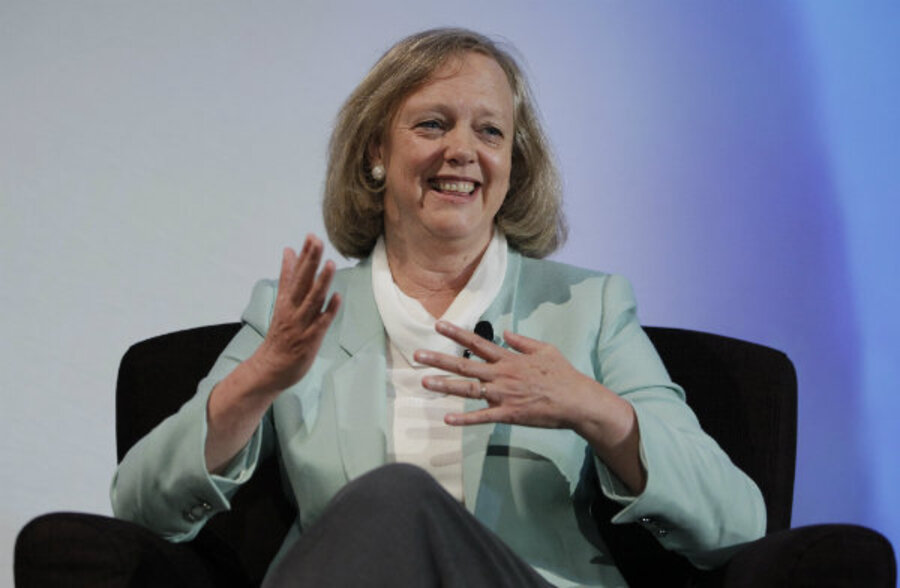After 20 years of Take Our Daughters to Work Day, time for a rethink
Loading...
| New York
Today marks the 20th anniversary of Take Our Daughters to Work Day. The event, which now includes our sons too, is still a valuable chance to help children understand the workplace. But the problems that face girls and women have changed in the past two decades, and it’s time for the day’s emphasis to change, too.
What we need now is Take Our Daughters to the C-Suite Day – the offices occupied by corporate "chiefs."
Twenty years ago, the Ms. Foundation launched the program to demystify the workplace for girls and inspire them to embrace a wide range of careers. Now that women represent half the US workforce, we can fairly say that mission has been accomplished.
Girls no longer need help picturing themselves in a job; what they do need is encouragement to become leaders. In Fortune 500 companies, women make up just 3.6 percent of CEOs, 14 percent of executive officers, and 16 percent of board directors. Companies need to do much more to inspire women to lead, rather than blaming the lack of women leaders on what Facebook Chief Operating Officer Sheryl Sandberg calls an “ambition gap.”
Companies that are already committing time and resources to Take Our Children to Work Day can help close that gap by shifting their focus in three ways: introducing girls to female role models; more clearly explaining what leaders of both genders actually do; and supporting programs throughout the year that actively identify and groom female talent.
Introducing girls to a company’s highest ranking women is an easy step any organization can add to their career day programs – and it’s one that can make a huge difference. Marie Wilson, founder of Take Our Daughters to Work Day, often quotes child-rights advocate Marian Wright Edelman on this topic: “You can’t be what you can’t see.”
Girls want to see role models: A recent study by the Girl Scouts found that 80 percent of girls want to interact with successful women, but 60 percent had not been offered the opportunity to see these women in action at the workplace. Boys, in contrast, see a variety of male leaders in all aspects of their lives.
Companies can help girls by using the day to introduce their employees’ daughters to women at the highest level of the company. And highlighting these leaders’ accomplishments will give the women themselves more visibility.
Girls also need to understand what leadership is like on a day-to-day basis. The more they understand the specific requirements and rewards of leadership, the better choices they can make about their own careers. How do executives motivate teams, solve complex financial problems, and develop new products? Making the responsibilities, roles, and payoffs of leadership clear from the time girls are in grade-school would help make leadership more tangible.
It would also help resolve another issue the Girl Scouts identified: More than a third of girls said they wouldn’t feel comfortable trying to lead, and nearly 40 percent didn’t think they were cut out for leadership. Hearing directly from both male and female leaders about what they actually do could help close that gap.
Finally, these efforts need to reach beyond a single day in April. Companies and schools need proactive efforts to move women into leadership roles. That’s what Princeton University did when it found that the number of female students winning top academic honors and holding visible leadership roles had declined over the last decade.
President Shirley Tilghman convened a steering committee to investigate and recommend solutions. One immediate result was that the faculty started proactively encouraging female students to apply for academic prizes. In 2011, 3 out of 4 Princeton Rhodes Scholars were women. Ambition did not just appear out of nowhere for these women – encouragement from influential people clearly mattered.
In corporate environments, that kind of support appears as sponsorship. In contrast to mentors, sponsors spend their political capital on behalf of their protégés. They provide opportunities instead of merely advice. A professor who pushes a student to apply for the Rhodes – and offers to write a letter of recommendation – is providing sponsorship. The best companies for diversity have formal sponsorship initiatives to achieve similar results.
Much has changed in the workplace in the 20 years since we first took our daughters to work, but women’s rates of top leadership have barely budged. That disparity is costing our companies talent, hurting the country’s competitiveness, and undermining our ideals of fairness and social equality.
Simply showing our daughters what an office looks like is no longer enough. Real breakthroughs will come when we bring girls inside the halls of power. We need to take our daughters into the C-Suite now so they can lead in the future.
Jennifer Allyn is a managing director at PricewaterhouseCoopers LLP responsible for retaining and advancing women.







